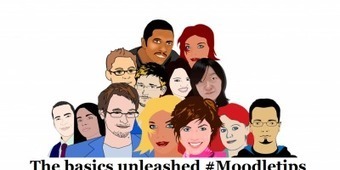Moodle is based on the Social Constructionism pedagogy and according to that : “We learn particularly well from the act of creating or expressing something for others to see” . Moodle supports this kind of collaborative learning environment right from its core. Many other LMS’s available in the market may support document collaboration or project collaboration but Moodle is way ahead from all the other industry LMS’s.
The heart of Moodle is courses that contain activities and resources. The main power of this activity-based model comes in combining the activities into sequences and groups, which can help you guide participants through learning paths. Thus, each activity can build on the outcomes of earlier ones. You can create groups in Moodle to support collaborative learning.
In this article – I am going to uncover the basics of Groups, Groupings and Cohorts in Moodle context. So, if you are a new Moodler looking to find your way in all these technical jargon, then Don’t worry, I will give you a simple overview of the Groups, Groupings & Cohorts and how you can effectively use them.
Via Miloš Bajčetić



 Your new post is loading...
Your new post is loading...








